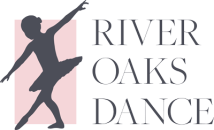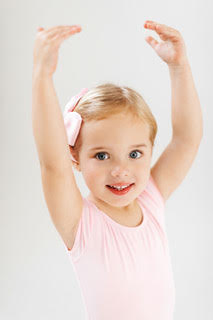
Whether you are a parent or a teacher (or both!), it’s inevitable that as you get older you gain more experience in raising your children and teaching your students. I know I am a much better parent today than I was 18 years ago and I am a much more knowledgeable teacher than I was when I first started teaching 11 years ago. I think this knowledge – at least for me – was gained not only through time (and being around thousands of children between the ages of 3-6), but though observing other teachers and parents, by continuing to take class myself, by attending workshops and seminars designed specifically for childhood dance education and by reading articles and books written by child developmental psychologists on the way children learn through movement.
I have gained a passion for the way children learn though Dance Movement Therapy (DMT); not just learning to dance (which I think is pretty awesome!), but all of the long lasting life skills they learn in a dance class. And I’m not alone. Doctors and therapists all over the world recognize the benefits of dance education in preschool and elementary age children.
Every year I talk to parents with children in occupational or other types of therapy. I have even had a chance to talk to some therapists about their movement work with children. It’s just natural that these things make sense together. And it’s refreshing to know that therapists, parents and teachers are all starting to recognize the benefits of dance and movement therapy for children. There is so much information out there, but if you want to read more, one website I came across is here. It’s not too scientific, but has lots of great information. One of my favorite posts is about the benefits dance for children with, ashma, ASD, ADHD and Cancer, below. Happy reading!
Asthma
Children with asthma that participate in dance therapy benefit from communicative lessons and stress-reduction techniques. Dance therapy addresses the emotions of the individual, breathing patterns, body image, family communication and obedience to asthma management.
Autism
Children with ASD experience life through physical sensations rather than non ASD individuals who experience life through all of the senses. ASD children commonly have self-stimulating movement qualities and commonly take on abnormal motor behaviors. The abnormal motor behaviors can include toe-walking, rocking or flapping motions. In dance therapy, therapists view patients’ movements as a language and consider the movements to be expressions of hidden thoughts and emotions that the child is conveying. Occupational therapists can provide an ASD client with interventions, dance, to help the child appropriately respond to information coming in through the child’s senses. A therapist could include dancing to assist in play therapy that aids the child in interacting with others.
Cancer
Dance therapy is a resource to facilitate coping with illness, especially for individuals who are dealing with disease processes associated to cancer. Children with cancer have greater psychological adjustment problems than healthy peers. In early childhood, a key issue in accepting the psychological modification of cancer is to determine the extent of disturbance caused by the condition. Therapeutic goals focus on helping the child with cancer adjust and adapt to the anxiety of the condition. The capability to generate and execute different fundamental movement patterns is essential to the therapeutic process for more advanced and integrated motor activities.
Practitioners introduce specific body movement structures that address starting and stopping, adjusting the shape of the body within a designated space, and exploring opposite qualities. Children with cancer experience dance by becoming more incorporated and familiar on a body level, with various situations and slight gradations.
In school-aged children, peer relationships become increasingly complex and become central to socio-emotional development. The noticeable physical changes connected with cancer, and its treatment, becomes a challenge as it relates to eased interactions with peers and cancer patients. Rejection by peers who do not have cancer can lead to feelings of self-consciousness, fear, and removal to individuals with cancer. Dance can provide a way by which abstract concepts are addressed and allow the individual to explore the nonverbal expression of growing emotions.
Chronic illness and cancer have major implications for adolescents. Loss of normal contact with peers may lead to isolation. Falling behind in schoolwork can incite feelings of shortage and being overwhelmed. Delayed physical development, disability, or defacement related with cancer make the adolescent even more sensitive to concerns about body image. Dance therapy interventions for children with cancer focus on mobilization, gross motor skills, and self-expression aimed to merge cancer-related changes in the body. Group formats are ideal because each individual comes to the group with a unique set of needs. Overall, DMT offers elements of development, coping, and adaptation by using an approach to therapy that goes beyond vocal ideas, adding an extensive dimension to the holistic care of patients with cancer.
ADHD
Children with attention-deficit hyperactivity disorder (ADHD) lack the ability to pay attention, control their activity, and restrain impulsive behavior. These problems may interfere with a child’s ability to hear or read instructions, complete assignments and tasks, and participate in games. Dance therapy allows children with ADHD the ability to release energy productively instead of through aggressive, impulsive means. Dance therapy provides children with structure and a calm environment resulting in the ability to focus during treatment. Individuals who are troubled with uncoordinated movement and body tension profit from dance therapy to address these issues, allowing individuals to place superfluous energy into the dance and allowing deep emotions to be brought to the surface.
Cohen, S. O., &Walco, G. A. (1999). Dance/movement therapy for children and adolescents with cancer. Cancer Practice, 7, 34-43.
Zlius, M. N. (2010). Dance/movement therapy in pediatrics. Alternative and Complementary Therapies, 7, 87-91. doi: 10.1089/act.2010.16202

